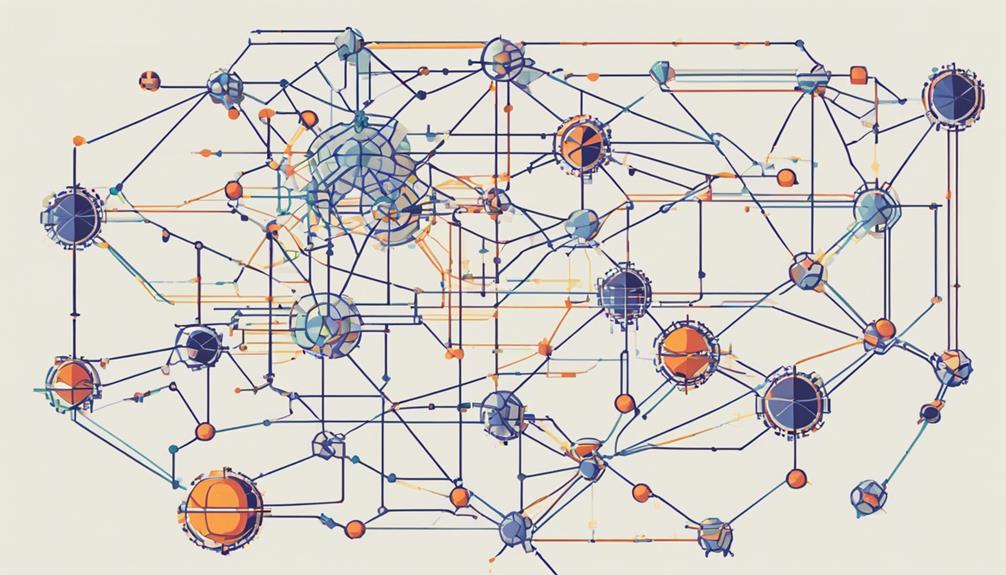The intricate dance of satellites in orbit is meticulously choreographed by the intricate Guidance and Control Systems they house. These systems, composed of a symphony of sensors, actuators, and algorithms, are the unsung heroes that maintain the satellites' precise positioning and orientation in the vastness of space. As we peer into the complexities of these systems, we uncover a world where precision and accuracy are not just desired but imperative, where the slightest miscalculation can have far-reaching consequences. In this realm of technological ballet, the stakes are high, and the mastery of Guidance and Control Systems is paramount to the success of satellite missions.
Key Takeaways
- Satellite guidance systems employ IMUs and gyroscopes for stability and precise instrument pointing.
- Control systems analyze IMU data for adjustments ensuring optimal orientation.
- Gyroscopic Stability Mechanism aids in resisting attitude changes for reliable data transmission.
- Star Trackers play a vital role in accurate three-axis attitude estimation for correct instrument pointing.
Satellite Guidance Systems Overview
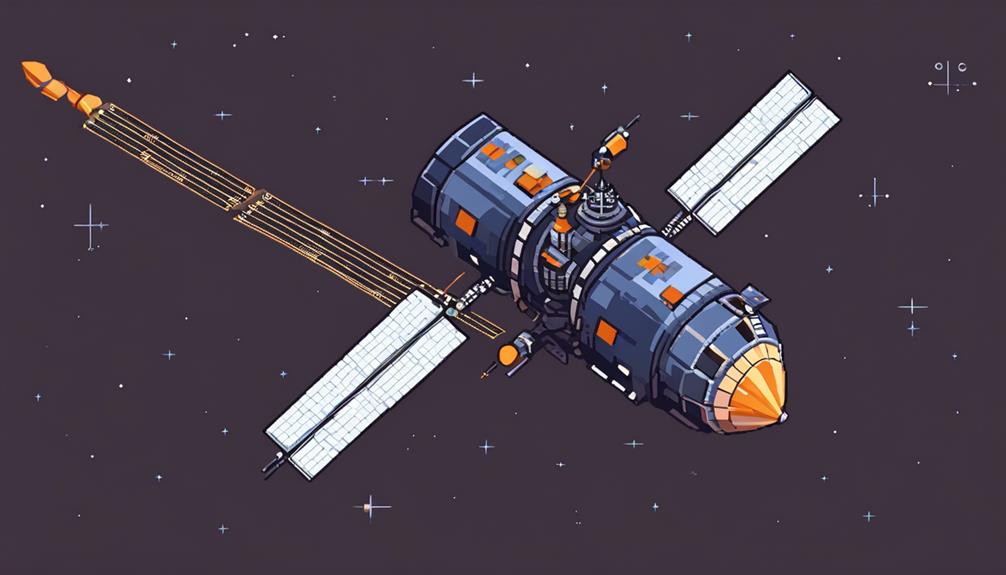
Satellite guidance systems play a critical role in ensuring the stability, orientation, and precise pointing of scientific instruments aboard satellites for optimal data collection and transmission. These systems incorporate sophisticated control systems and utilize Inertial Measurement Units (IMUs) to accurately determine the satellite's position, velocity, and orientation in space. IMUs consist of accelerometers and gyroscopes that measure acceleration and angular velocity, respectively, providing essential data for maintaining the satellite's desired trajectory.
Control systems within satellite guidance systems use this data to make precise adjustments to the satellite's orientation and pointing direction. By analyzing information from the IMUs, the control system can calculate the necessary corrections to counteract any disturbances that may affect the satellite's position or orientation. This ensures that scientific instruments remain accurately pointed towards their intended targets, allowing for reliable data collection and transmission.
In essence, satellite guidance systems are pivotal components in the operation of satellites, enabling them to navigate through space with precision and stability. The integration of Inertial Measurement Units and advanced control systems ensures that satellites can fulfill their scientific objectives by maintaining optimal orientation and pointing accuracy.
Gyroscopes in Satellite Control
Gyroscopes in satellite control systems play a crucial role in ensuring stability through their gyroscopic mechanism. These devices enable precise adjustment of the satellite's orientation, allowing for accurate pointing of various components such as antennas and solar panels. Additionally, gyroscopes enhance the satellite's capability for attitude correction, facilitating efficient control of movements in space.
Gyroscopic Stability Mechanism
Utilizing spinning discs as a stabilizing mechanism, gyroscopic systems play a critical role in maintaining the orientation and direction of satellites in space. Gyroscopes in satellites provide stability by resisting changes in spacecraft attitude through their spinning motion. These gyroscopic stability mechanisms sense angular velocity and help stabilize satellites by counteracting external forces that may affect their orientation. Additionally, gyroscopic control systems assist in the precise pointing of satellite antennas and sensors, ensuring accurate data collection. The gyroscopic stability provided by these systems is vital for satellite operations, especially during maneuvers and critical data acquisition processes.
- Gyroscopes resist changes in spacecraft attitude.
- Gyroscopic mechanisms sense angular velocity.
- Gyroscopes counteract external forces affecting satellite orientation.
- Gyroscopic systems aid in pointing satellite antennas and sensors.
- Gyroscopic stability is crucial for satellite operations.
Attitude Correction Capability
In the realm of satellite control systems, the capability for precise attitude correction is fundamentally facilitated by the measurement of angular velocity through gyroscopes. Gyroscopes play a critical role in maintaining satellite stability by detecting and correcting deviations from the desired orientation. These devices conserve angular momentum, allowing for the accurate pointing of satellite instruments. Integrated with Inertial Measurement Units (IMUs), gyroscopes provide continuous attitude information essential for the proper functioning of Guidance, Navigation, and Control (GNC) systems. Their contribution is vital for ensuring the satellite maintains the correct orientation during maneuvers and various operations in space. By leveraging gyroscopes within IMUs, satellites can achieve the necessary precision in attitude control for successful mission execution.
Precision Orientation Control
Precision orientation control in satellite systems is a critical aspect of maintaining stable and accurate positioning in space missions. Gyroscopes play a vital role in achieving this control by utilizing the principle of angular momentum. Here are some key points about gyroscopes in satellite control:
- Gyroscopes in satellites provide precise orientation control by maintaining angular momentum.
- These gyroscopes help stabilize the satellite's orientation in space by resisting external torque.
- Gyroscopes measure the satellite's angular velocity and orientation, aiding in accurate pointing of instruments.
- Satellite control systems use gyroscopes to counteract disturbances and maintain desired orientation.
- Gyroscopes play a crucial role in ensuring that satellites remain properly aligned for optimal performance.
Role of Star Trackers in Satellites
Star trackers are integral components of satellite guidance and control systems, enabling precise three-axis attitude estimation through the comparison of captured star images to established star catalogs. These systems play a critical role in the navigation and control of satellites by providing accurate information about the spacecraft's orientation in space. By analyzing star patterns in the captured images, star trackers determine the satellite's attitude with high precision, allowing for the correct pointing of scientific instruments and communication devices towards specific targets in space.
Satellite star trackers are essential for maintaining the proper orientation of the spacecraft during various operations and missions. The images obtained by the star trackers are processed to identify the unique patterns of stars, which are then used to calculate the satellite's orientation relative to Earth. This information is crucial for ensuring that the satellite remains aligned correctly for tasks such as Earth observation, communication, and scientific research.
Satellite Orbit Maintenance Techniques
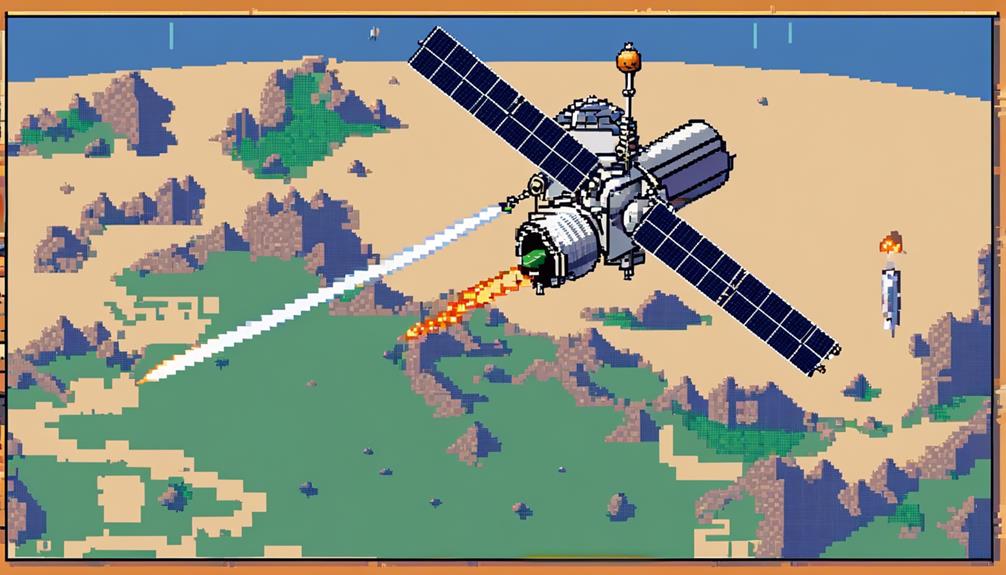
Satellites rely on a variety of orbit maintenance techniques, such as station-keeping maneuvers and the use of propulsion systems, to correct deviations from their desired orbits and counteract gravitational perturbations and atmospheric drag. These techniques are crucial for ensuring the operational efficiency and longevity of the satellite missions. Here are some key methods employed for satellite orbit maintenance:
- Station-Keeping Maneuvers: Satellites perform periodic adjustments to their orbits using thrusters or ion engines to compensate for deviations caused by external factors.
- Propulsion Systems: Thrusters and ion engines are utilized for precise orbit control and adjustments to counteract gravitational perturbations and atmospheric drag.
- Ground-Based Tracking Stations: Data from ground-based tracking stations is essential for accurate orbit determination and monitoring, enabling timely corrections.
- Autonomous Orbit Maintenance Algorithms: Advanced satellite systems may employ sophisticated algorithms for autonomous orbit maintenance, improving efficiency and accuracy.
- Integration of Navigation Systems and Multiple Sensors: Satellite orbit maintenance often involves integrating data from navigation systems and multiple sensors for real-time monitoring and adjustment of the satellite's position and velocity.
Navigation Systems in Spacecraft
Navigation systems in spacecraft are crucial for determining the vehicle's precise location in space. These systems employ various methods such as GPS, stellar navigation tools, and celestial position triangulation to accurately guide the spacecraft. By utilizing these advanced techniques, spacecraft can navigate through the vastness of space with precision and efficiency.
GPS in Spacecraft
Utilizing cutting-edge GPS technology, spacecraft in low-Earth orbit missions rely on GPS receivers for precise orbit determination and velocity calculations during maneuvers.
- GPS receivers in spacecraft provide primary orbit determination in low-Earth orbit missions.
- GPS data aids in precise spacecraft positioning and velocity calculations during maneuvers.
- Spacecraft rely on GPS signals for accurate navigation and trajectory adjustments in space.
- GPS technology enhances autonomous operations and navigation capabilities of satellites.
- Integration of GPS receivers ensures accurate and efficient orbital operations for satellites.
Stellar Navigation Tools
In spacecraft operations, the integration of stellar navigation tools such as star trackers and Crewman Optical Alignment Sight (COAS) plays a crucial role in determining spacecraft orientation and enhancing navigation precision. Star trackers provide precise three-axis attitude estimation by comparing observed star patterns with known star catalogs, while COAS systems assist astronauts in aligning spacecraft with specific targets in space for guidance and control purposes. Modern navigation systems also incorporate Inertial Measurement Units (IMUs) alongside these stellar navigation tools for accurate spacecraft navigation. The combination of star trackers, COAS, and IMUs ensures that spacecraft can maintain proper orientation and navigate effectively in space.
| Stellar Navigation Tools | Functionality | Integration in Spacecraft |
|---|---|---|
| Star Trackers | Attitude estimation based on star patterns | Yes |
| Crewman Optical Alignment Sight (COAS) | Assists in aligning spacecraft with targets | Yes |
| Inertial Measurement Units (IMUs) | Provides additional data for accurate navigation | Yes |
Celestial Position Triangulation
For spacecraft navigating through the vast expanse of space, the intricate process of celestial position triangulation involves precisely measuring angular relationships between the horizon and celestial objects. This method is crucial for accurate navigation in space and relies on advanced technologies for optimal results. Key aspects of celestial position triangulation include:
- Utilization of angular measurements between celestial bodies and the horizon.
- Integration of optical calibration and Inertial Measurement Units (IMUs) for precise positioning.
- Common tools such as star trackers and Crewman Optical Alignment Sight (COAS) for accurate readings.
- Modern guidance systems combining data from various sensors using Kalman filters.
- Employment of radar and laser navigation systems for spacecraft guidance relative to known targets.
Utilizing Inertial Sensing for Satellites
Incorporating inertial sensing technology into satellite systems is integral for monitoring orientation and motion accurately in space missions. Inertial sensing involves the use of gyroscopes to measure angular velocity and accelerometers to detect linear acceleration in satellites. These sensors provide crucial data for attitude control and navigation systems, enhancing the accuracy and reliability of satellite operations. By integrating inertial sensors with other navigation systems, satellites can achieve precise positioning and maintain stability in space.
| Inertial Sensing Technology | Applications | Benefits |
|---|---|---|
| Gyroscopes | Monitoring orientation | Accurate motion tracking |
| Accelerometers | Detecting linear acceleration | Enhanced attitude control |
| Integration with navigation systems | Improving accuracy | Ensuring reliable satellite operations |
The combination of inertial sensing with navigation systems not only improves the overall performance of satellites but also plays a vital role in ensuring the success of space missions. By utilizing these advanced technologies, satellites can navigate through space with increased precision and efficiency, making them indispensable tools for various scientific, commercial, and military applications.
Importance of Magnetic Torquers
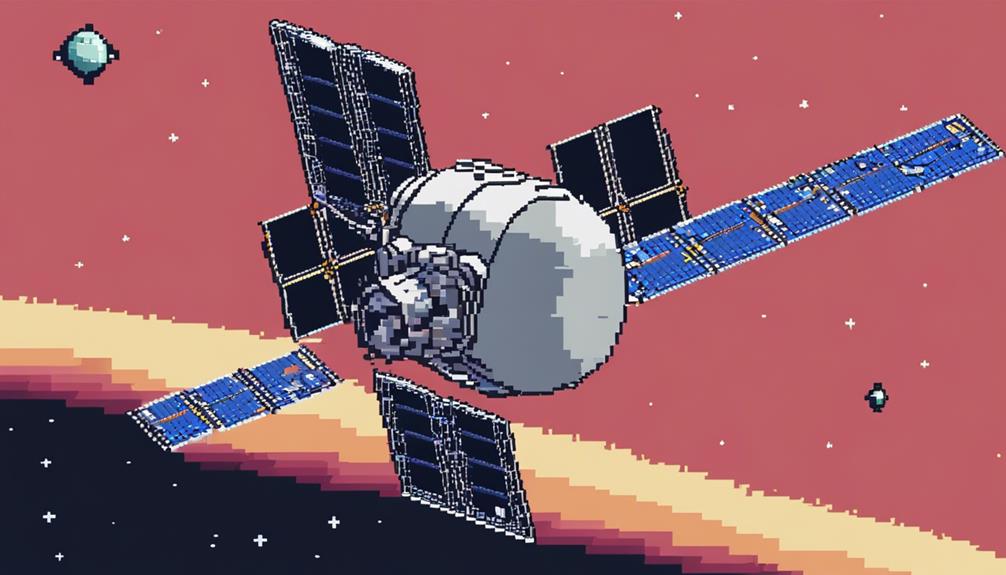
Utilizing magnetic torquers is imperative in satellite systems as they provide essential control torques perpendicular to the local magnetic field, aiding in spacecraft stability and precise attitude control maneuvers. Magnetic torquers play a crucial role in satellite operations due to their ability to interact with the Earth's magnetic field, allowing for accurate control and maneuvering in space. Here are some key points highlighting the importance of magnetic torquers:
- Control Torques: Magnetic torquers generate magnetic forces that help adjust the satellite's orientation, enabling precise control over its attitude.
- Stability: These devices assist in removing unwanted momentum from reaction wheels, ensuring the spacecraft's stability during maneuvers.
- Attitude Control Maneuvers: Magnetic torquers aid in performing attitude control maneuvers by providing the necessary torques to achieve the desired orientation.
- Pointing Accuracy: By maintaining the spacecraft's desired attitude, magnetic torquers contribute to achieving high pointing accuracy for various satellite missions.
- Interaction with Earth's Magnetic Field: Magnetic torquers utilize the Earth's magnetic field to apply controlled torques, facilitating the satellite's navigation and orientation tasks with precision.
Thruster Systems in Satellite Control
The integration of thruster systems in satellite control is fundamental for executing precise attitude adjustments and orbital maneuvers in space missions. Thrusters play a pivotal role in providing the necessary control torques for adjusting the satellite's orientation, facilitating tasks such as orbit insertion, stationkeeping, and attitude control maneuvers. These systems utilize propellant expulsion to generate thrust, enabling spacecraft to alter their orientation and position in space. The selection of thrusters depends on the specific mission requirements, with options including chemical, electric, and cold gas propulsion systems.
Navigation systems and sensors are crucial components that work in conjunction with thruster systems to ensure accurate and effective control of the satellite. Navigation systems provide essential data on the satellite's position and velocity, allowing for precise calculations and adjustments to be made when firing the thrusters. Sensors play a vital role in monitoring the satellite's orientation, detecting any deviations from the desired attitude, and providing feedback to the control system to initiate the necessary corrective actions.
Advanced Satellite Control Technologies
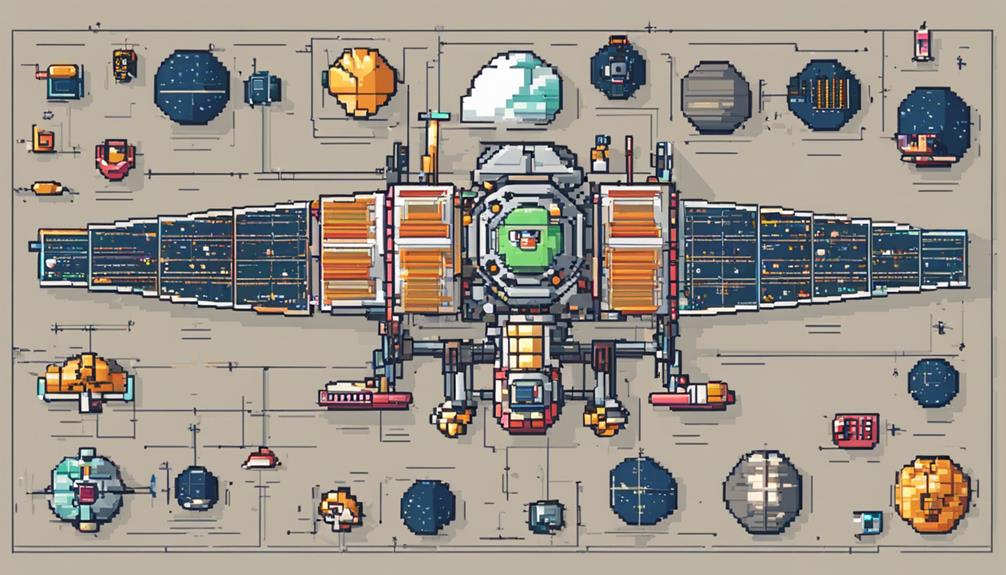
Advanced Satellite Control Technologies encompass cutting-edge advancements in the field of satellite guidance and control, revolutionizing the precision and efficiency of orbital maneuvers and attitude adjustments in space missions. These technologies are at the forefront of enhancing satellite functionality and operational capabilities. Key developments in this area include:
- High-speed magnetically levitated reaction wheels: These innovative systems significantly enhance satellite attitude control and maneuverability, enabling more precise and rapid adjustments in space.
- Cost-effective attitude determination and control systems: Specifically designed for nano-satellites, these systems offer reliable solutions for maintaining the orientation of small spacecraft in orbit.
- Attitude determination technologies utilizing spherical projections: By employing this approach, satellites can achieve enhanced accuracy in determining their orientation, crucial for successful mission operations.
- Film evaporation MEMS thruster arrays: Designed for micropropulsion in small spacecraft, these thruster arrays enhance maneuverability, allowing for more controlled movements in space.
- Advanced navigation systems: Technologies such as atomic clocks and optical communications, tested by NASA, offer improved capabilities for deep space navigation and precise positioning, benefiting a wide range of space missions.
These advancements represent a significant leap forward in satellite control technologies, paving the way for more efficient and sophisticated space missions.
Frequently Asked Questions
What Is the Control System of Satellite?
The control system of a satellite encompasses a network of hardware and software elements that collectively guide, navigate, and manage the spacecraft's operations in space. This system is responsible for maintaining precise positioning, orientation, and executing maneuvers using components such as reaction wheels for attitude determination and satellite propulsion systems for orbital mechanics. These elements work in unison to ensure accurate instrument pointing, stable orientation, and efficient movement throughout the satellite's mission.
What Is Guidance Navigation and Control of Space Systems?
Guidance, navigation, and control (GNC) of space systems involve the precise orchestration of orbital maneuvers and trajectory optimization. This complex process integrates attitude determination with thrust vectoring capabilities to ensure accurate positioning and orientation of spacecraft. By leveraging advanced sensor data processing and command allocation algorithms, GNC systems play a vital role in enabling safe and efficient operations in the challenging environment of space.
How Do They Control Satellites?
To control satellites, precise orbital maneuvers are executed through thruster selection. Attitude determination is ensured using sensor fusion techniques, integrating data from gyroscopes, sun sensors, and magnetometers. This allows for accurate orientation tracking and position referencing. Control commands from the Guidance, Navigation, and Control system enable tracking of desired states, ensuring smooth operation and functionality of satellites in space. This intricate system relies on hardware components and software processes for optimal performance.
What Is Navigation Vs Guidance Vs Control?
Navigation systems focus on determining a spacecraft's position relative to references in space, utilizing methods such as GPS and star trackers. In contrast, control algorithms involve executing commands to actuators like reaction wheels and thrusters to maintain the satellite's orientation and position. Guidance, on the other hand, utilizes navigation data to make decisions on how the satellite should move or adjust its trajectory based on mission objectives.
